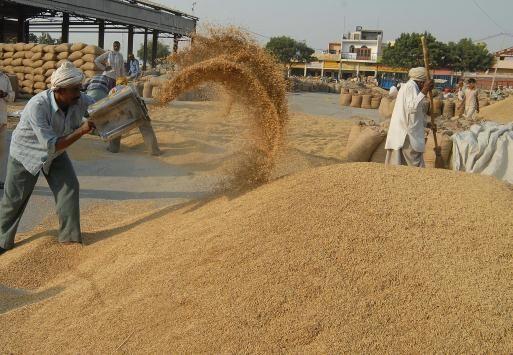
BY MADHVI SALLY
NEW DELHI: India expects its farm output growth to remain stable at 4% in the 2017-18 crop year, penciling in normal rains during the June-September monsoon season that helps irrigate farmlands across vast swathes of the country.
“The agriculture growth rate of 4%, which we are expecting for 2016-17, will be maintained this year too,” India’s secretary for the farm ministry, Shobhana Pattanayak, said in New Delhi.
Underpinned by stable growth, the farm sector is targeting a record food-grain output of 273 million tonnes in the crop year beginning July, with 107 million hectares of land being used for the kharif, or summer-sown, crop.
“For the year 2017-18, food-grain production target set by us is 273 million tonnes,” Agriculture Minister Radha Mohan Singh said, addressing officials from across the country. According to the second advance estimate released by the Agriculture ministry, food-grain production would touch a record 271.98 million tonnes in the 2016-17 crop year (July-June).
The June-September monsoon rainfall this year is expected to be 96% of the long-term average, with a 5% error margin, the India Meteorological Department (IMD) said earlier this month. The monsoon season accounts for three-fourths of the country’s annual rainfall, and is crucial to an economy where more than half the population depends on agriculture for their livelihood, and where monetary policy is linked to food inflation.
Officials from across India are meeting in New Delhi for two days to chalk out strategies for the planting of the kharif crop. The kharif acreage this year would be similar to that of the previous crop year. Lentils, however, were likely the focus this season, and the government would target 1 million tonnes of additional production to last year’s output of 23 million tonnes.
The government has also prepared contingency plans for 623 districts in 28 states to help farmers deal with lower output in the event of scanty rains, or the delayed onset of the monsoons, officials said.
“The seed requirement for kharif is 154 lakh quintals, while we have 176 lakh quintals of seeds,” said the agriculture ministry. About 83.46 lakh quintals of paddy seeds and 3.75 lakh quintals of tur dal seeds were available.
Singh also urged the various state governments to implement central programmes, such as the Pradhan Mantri Fasal Bima Yojana and parampragat krishi vikas yojana for organic farming, so that farmers get funds on time.
The two-day conference would discuss ways of increasing kharif out, raising overall agricultural productivity, and ensuring the availability of inputs before the cropping season.
Separately, officials also said that wheat production may hit a record 98 million tonnes in the 2016-17 year, compared with the 96.64-million-tonne target set by the government.
Source: Economic Times

Leave a Reply